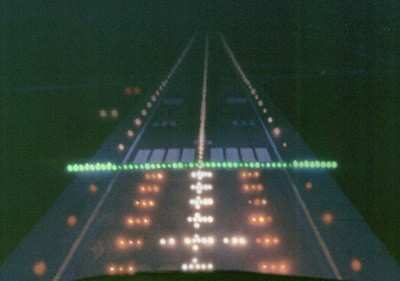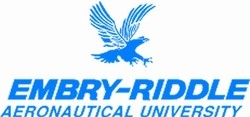FAA Program Focuses On Technology To Improve Safety, Lower
Costs
One of the leading causes of general-aviation fatal accidents is
incorrect aircraft maneuvering and landing, especially during
evening and nighttime hours, according to researchers at
Embry-Riddle Aeronautical University. This is especially critical
in remote locations that often depend on air transportation as the
only means to handle medical and disaster-related emergencies.

To combat the problem, Embry-Riddle researchers and their
partners from the University of Alaska-Anchorage (UAA), the
University of North Dakota and Rensselaer Polytechnic Institute
(RPI) are working for the FAA Center of Excellence for General
Aviation to improve nighttime safety at small general aviation
airports with an innovative, low-cost, and highly portable Remote
Airport Light System (RALS) that uses LED lights and
retro-reflective markers.
"The lighting system developed by the research team improves the
ability of the pilot to identify the airfield, orient the aircraft
to landing, and to land safely," said Dr. Dan Macchiarella,
associate professor of aeronautical science at Embry-Riddle's
College of Aviation. "This is a real boon to small, rural airports
where pilots are currently landing with no lighting system at all
or with the unreliable guidance of improvised systems like smudge
pots."
The need is especially great in Alaska and internationally, he
said, where remote airfields that don't have access to an
electrical grid require alternative solutions for the safe landing
of aircraft bearing emergency medical and disaster-relief workers
and supplies."
Macchiarella recently led Embry-Riddle researchers and pilots in
a successful test of the new system, temporarily installed at
Massey Ranch Airpark in Edgewater, Fla., which included the landing
of aircraft guided by RALS. The evaluation was observed by UAA, RPI
and FAA officials. The next step is installation of the system in
Alaska for continued nighttime testing through December.
In addition, the researchers plan to make presentations to the
US Department of Transportation, the Airport Lighting Consortium,
the Illuminating Engineering Society, and professional aviation
groups.
In the RALS setup, typical edge lights are replaced with
reflective panels, similar to the technology on road signs, to
assist the pilot in safely landing the aircraft. This kind of
marker requires no power and is more brightly visible when lit by
an airplane's landing lights. The system uses low-powered LED
lights to mark the corners of the landing strip, and flash in
synchronization with Global Positioning System (GPS) time to give
pilots improved cues for airfield identification and landing.
 The RALS idea originated with the
FAA Center of Excellence for General Aviation, a research
consortium of universities, corporations, and government agencies
led by Embry-Riddle. The consortium addresses the needs of general
aviation, defined as all aviation except military and commercial
enterprises. Embry-Riddle, working with other team members, also is
developing guidelines to advise remote airport operators how to use
this system.
The RALS idea originated with the
FAA Center of Excellence for General Aviation, a research
consortium of universities, corporations, and government agencies
led by Embry-Riddle. The consortium addresses the needs of general
aviation, defined as all aviation except military and commercial
enterprises. Embry-Riddle, working with other team members, also is
developing guidelines to advise remote airport operators how to use
this system.
"In the present economy, airports are looking for ways to cut
costs while still maintaining high safety standards," said Dr.
Chris Grant, director of Embry-Riddle's research team and associate
dean of the College of Engineering. "Considering that a standard
FAA-approved lighting system can cost anywhere from $100,000 to $1
million, depending on the number of runways and taxiways, our test
system is a bargain at only $3,000."
According to Grant, the highly reliable LED lights have a
lifetime of about 25,000 to 30,000 hours, last 10 to 20 times
longer than the incandescent bulbs typically used, and reduce
energy consumption by about two-thirds.
 ANN's Daily Aero-Linx (04.15.24)
ANN's Daily Aero-Linx (04.15.24) Classic Aero-TV: 'No Other Options' -- The Israeli Air Force's Danny Shapira
Classic Aero-TV: 'No Other Options' -- The Israeli Air Force's Danny Shapira Aero-News: Quote of the Day (04.15.24)
Aero-News: Quote of the Day (04.15.24) Airborne 04.16.24: RV Update, Affordable Flying Expo, Diamond Lil
Airborne 04.16.24: RV Update, Affordable Flying Expo, Diamond Lil ANN's Daily Aero-Term (04.16.24): Chart Supplement US
ANN's Daily Aero-Term (04.16.24): Chart Supplement US




